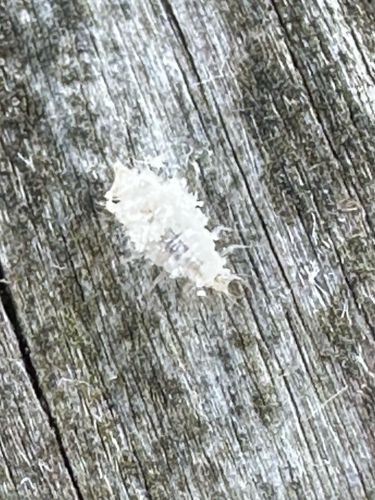Mealybug (likely a nymph or small adult)
Scientific Name: Pseudococcidae (family level, specific species identification is difficult from the image)
Order & Family: Order: Hemiptera, Family: Pseudococcidae
Size: Typically range from 1-4 mm (0.04-0.16 inches) in length, though some species can be larger.

Natural Habitat
Mealybugs are commonly found on a wide variety of plants, indoors (houseplants) and outdoors (garden plants, fruit trees, ornamental shrubs). They prefer warm, protected locations on plants, such as leaf axils, undersides of leaves, and stem crevices.
Diet & Feeding
Mealybugs are sap-sucking insects. They feed on plant sap by inserting their stylets (mouthparts) into the plant tissue, extracting nutrients. They excrete a sticky substance called honeydew, which can lead to sooty mold growth.
Behavior Patterns
Mealybugs are typically slow-moving and can often be found in clusters, especially on the undersides of leaves or in stem crevices. They secrete a waxy, white, cottony substance that protects them from predators and pesticides. Females lay eggs in this waxy ovisac. They are most active in warm, humid conditions.
Risks & Benefits
Risks: Mealybugs are significant agricultural and horticultural pests. Their feeding weakens plants, causing stunted growth, yellowing leaves, leaf drop, and in severe infestations, plant death. The honeydew they excrete can attract ants and lead to the growth of black sooty mold, which interferes with photosynthesis and is unsightly. Benefits: No direct benefits to humans or ecosystems, purely a pest.
Identified on: 9/2/2025